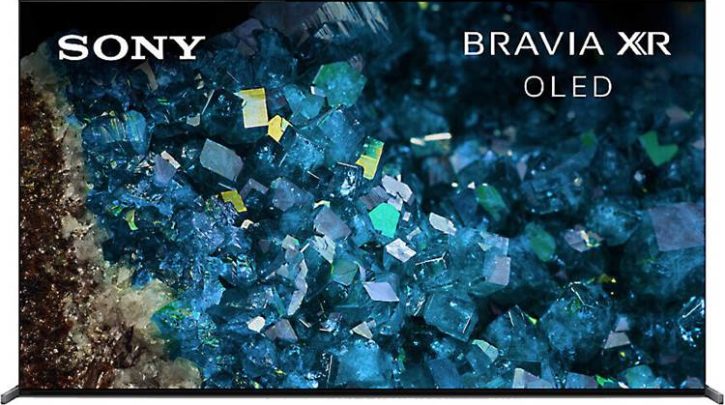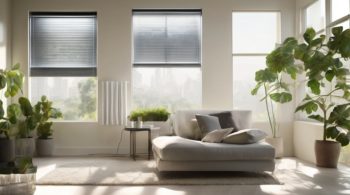There’s something compelling about having a cinematic experience right from the comfort of your home, and nothing brings this closer to reality than a premium television set. Today, we will compare two such powerhouses – the Sony Bravia XR-83A80L 83″ and the Samsung Class QN900B 85″. Both televisions are titans in the industry, offering cutting-edge technology designed to enhance the way we consume visual content. The battle is close, and every point counts, so let’s dive into the details.
Design Aesthetics: The First Impression
Design aesthetics play a crucial role in our modern interiors, so let’s start there. A TV is not just an entertainment unit anymore. It’s a statement piece, and these two models carry that badge with honor.
The Sony Bravia XR-83A80L offers a minimalist one-slate design with a seamless edge. It’s sleek, elegant, and designed to keep your attention on the screen. The flush surface and narrow aluminum bezel make the TV look like a floating canvas. It exudes an air of sophistication that is inherent to Sony’s design philosophy. It’s clear that every design decision here is focused on the viewing experience, which is a testament to Sony’s commitment to creating immersive viewing experiences.
On the other hand, the Samsung Class QN900B 85″ boasts an Infinity Screen design with a near-invisible bezel. The word ‘infinity’ implies a boundless viewing experience, and that’s what Samsung aims to provide with this design. The 99% screen-to-body ratio creates an illusion that the picture is floating in the air. Furthermore, the Attachable Slim One Connect box keeps the cables out of sight, maintaining a clean, clutter-free look.
Design is subjective, so the winner in this category is dependent on individual preference. Do you prefer Sony’s minimalist one-slate design, or is Samsung’s Infinity Screen more to your liking? That’s up to you to decide.

Picture Quality: The Heart of the Viewing Experience
Arguably the most important aspect of a television is picture quality, and this is where the competition gets intense.
The Sony Bravia XR-83A80L is built with Cognitive Processor XR, the world’s first processor that understands how humans see and hear, providing a realistic and immersive viewing experience. The XR Triluminos Pro enables a wider palette to reproduce each color with the subtle differences seen in the real world. It produces more accurate and natural shades by expanding and manipulating the color spectrum. Moreover, XR OLED contrast ensures brighter highlights, deeper blacks, and colors that are more natural.
On the other side, the Samsung Class QN900B stands tall with its Real 8K Resolution, providing 33 million pixels – four times more than 4K. The picture quality is exceptionally crisp and clear, even on a big screen. The Neo Quantum Processor 8K uses 20 neural networks to optimize picture quality to 8K perfection, regardless of the input quality. In addition, Quantum HDR 64X sets a new standard for incredible detail and brightness. The high dynamic range extends the range of color and contrast significantly, making the picture look more realistic.
When it comes to motion handling, Sony employs XR Motion Clarity technology to control moving images precisely to minimize blur during high-speed scenes. Samsung, on the other hand, uses Motion Xcelerator Turbo Pro to enhance the performance of high-speed games and movies with refresh rates up to 120Hz and next-gen gaming capabilities up to 144Hz for computers.
In terms of picture quality, both TVs are heavy hitters. Sony’s Cognitive Processor XR aims to mimic human perception, while Samsung’s Real 8K Resolution offers four times the resolution of 4K. The choice here depends on whether you value Sony’s unique approach to picture processing or Samsung’s high-resolution advantage.
Sound Quality: The Soul of the Viewing Experience
When it comes to television, sound quality is just as important as picture quality. A movie with great picture quality but poor sound can be a disappointing experience.
Sony Bravia XR-83A80L uses Acoustic Surface Audio+ technology, turning the entire screen into a speaker. This technology enables sound to follow the action for a truly immersive experience. Sony also uses XR Sound Position that brings you the reality of sound behind the picture. As a result, audio and visuals are in perfect harmony. Furthermore, the TV is equipped with 3D surround upscaling, which can convert any sound source into a 3D sound experience.
Samsung Class QN900B is equipped with Object Tracking Sound Pro (OTS Pro), which provides room-filling, lifelike audio. The speakers are placed all around the screen, and the sound moves with the action in every scene. Combined with Dolby Atmos, you get a dynamic and immersive 3D sound experience. You can hear the rain fall all around you, or a car zoom past you.
While both TVs offer impressive sound technology, Sony’s screen-as-a-speaker approach is innovative. However, Samsung’s OTS Pro, combined with Dolby Atmos, provides a solid counterpoint. The winner in this category will depend on whether you prefer the novelty of Sony’s Acoustic Surface Audio+ or the dynamic sound of Samsung’s OTS Pro.
Gaming and Interactive Features: The Playground
A TV isn’t just for passive consumption anymore. With a boom in the gaming industry and interactive features, it’s critical to assess how our contenders handle these aspects.
The Sony Bravia XR-83A80L is designed with gamers in mind. Its HDMI 2.1 ports, XR Motion Clarity, and low input lag significantly enhance the gaming experience. Sony’s Game Mode offers higher frame rate, reduced input lag and VRR (Variable Refresh Rate) compatibility, ensuring that your gaming experience is smooth and uninterrupted. Furthermore, the Bravia XR series can output 4K resolution at 120Hz and supports ALLM (Auto Low Latency Mode), effectively minimizing input lag for a seamless gaming experience.
Samsung Class QN900B isn’t far behind either. The TV supports HDMI 2.1, 4K at 120Hz, VRR (Variable Refresh Rate), ALLM (Auto Low Latency Mode), and AMD FreeSync Premium Pro, all of which are important for serious gamers. The TV’s Game Bar in Game Mode lets you make real-time adjustments to screen ratio, input lag check, FPS, HDR, wireless headset settings and more. It also comes with Motion Xcelerator Turbo+, offering motion clarity during gameplay up to 4K at 120Hz.
While both TVs have their strengths, the Samsung Class QN900B seems to have a slight edge in this category due to its extensive gamer-friendly features.
Smart Features: The Brain of the TV
A smart TV serves as the entertainment hub of your home, so let’s discuss the smart features offered by both models.
Sony Bravia XR-83A80L uses Google TV, an intuitive interface that aggregates content from all your streaming services. You can ask Google to find movies, music, or stream shows, play games, or control smart home devices. The TV also has Chromecast built-in, allowing you to cast your favorite entertainment from your device to your TV.
Samsung Class QN900B runs on Tizen, Samsung’s proprietary smart TV platform, which provides a user-friendly interface. It offers a wealth of apps, easy access to connected devices, and voice control through Bixby, Amazon Alexa, and Google Assistant. A unique feature is Multi View, which lets you watch up to two things at once on the TV, including what’s on your mobile device.
The smart features are quite competitive in both models. If you prefer a Google-based ecosystem, Sony’s Google TV might appeal more to you. If you want a proprietary system with unique features like Multi View, Samsung’s Tizen could be your choice.
Design and Aesthetics
The Sony Bravia XR-83A80L and Samsung QN900B are not just televisions; they’re also statement pieces that can enhance or define the aesthetic of your living room. The Sony Bravia XR-83A80L features a minimalist design with a thin, streamlined bezel that gives prominence to the screen. Its stand is equally sleek and unobtrusive. On the other hand, Samsung’s QN900B boasts an Infinity Screen with a near-invisible bezel, offering an almost 100% screen-to-body ratio. Its Attachable Slim One Connect box reduces cable clutter for a clean, streamlined look. Both TVs showcase thoughtful design principles, so your preference would likely come down to personal taste.
Compatibility with Other Devices
The Sony Bravia XR-83A80L and Samsung QN900B are designed to serve as the centerpiece of your home entertainment system, and as such, offer broad compatibility with a range of devices. From soundbars and game consoles to Blu-ray players and home theater systems, both TVs should easily connect to and work with your existing devices.
| Specifications | Sony Bravia XR-83A80L 83″ | Samsung Class QN900B 85″ |
|---|---|---|
| Display Size | 83″ | 85″ |
| Resolution | 7680 x 4320 | 7680 x 4320 |
| Panel Type | OLED | Quantum Dot LCD |
| HDR Compatibility | HDR10, HLG, Dolby Vision | HDR10, HDR10+, HLG |
| Refresh Rate | 120Hz | 120Hz |
| HDMI Ports | 4 | 4 |
| USB Ports | 3 | 3 |
| Wi-Fi | Yes | Yes (Wi-Fi 6E) |
| Bluetooth | Yes | Yes (Bluetooth 5.2) |
| Speaker Output | 60W | 90W |
| Operating System | Bravia Core | Tizen OS |
| Built-In Voice Control | Google Assistant, Alexa | Alexa, Google Assistant, Bixby |
| Dimensions without Stand (WxHxD) | 73.1 x 41.5 x 1.9″ | 73.9 x 42.2 x 0.7″ |
The Final Verdict
After a thorough analysis of Sony Bravia XR-83A80L 83″ and Samsung Class QN900B 85″, it’s clear that both TVs bring formidable features to the table. The Sony Bravia XR-83A80L stands out with its Cognitive Processor XR, Acoustic Surface Audio+ technology, and Google TV. On the other hand, Samsung Class QN900B impresses with its Real 8K Resolution, Object Tracking Sound Pro, and extensive gaming features.
However, the choice between these two exceptional TVs will largely depend on individual preferences. Whether it’s Sony’s emphasis on creating a truly immersive viewing and listening experience or Samsung’s focus on providing an outstanding, feature-rich package, the decision lies in the eyes (and ears) of the beholder. Ultimately, both TVs will provide you with a top-notch entertainment experience, making every penny count.
Christina Pulluck helped bring Nebula Electronics from a a science and tech decision forum to a full-fledged news site by creating a new design and branding. She continues to assist in keeping the site responsive and well organized for the readers. As a contributor to Nebula Electronics, Christina mainly covers mobile news and gadgets.







